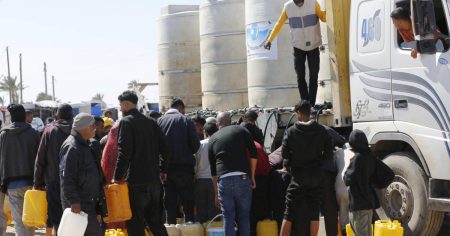The tragic crash of Jeju Air flight 7C2216 at Muan Airport, South Korea, claimed the lives of 179 passengers and crew, marking the nation’s deadliest aviation disaster. Among the victims was three-year-old Ko Yoonwoo, returning from his first international holiday with his parents, Kang Ko and Jin Lee Seon. The family’s trip to Thailand had been meticulously documented on Kang Ko’s Instagram account, showcasing Yoonwoo’s excitement at experiencing new sights and sounds. Pictures captured the toddler’s wide-eyed wonder at the airport, his playful interactions with animals at the zoo, and his joyful moments with his parents at iconic landmarks like the Grand Palace. The poignant contrast between these vibrant images of life and the sudden, tragic end to their journey underscores the devastating impact of the crash. The family’s story exemplifies the widespread grief and loss reverberating throughout South Korea following the disaster.
The social media posts offer a glimpse into the family’s cherished memories created during their holiday. Kang Ko’s captions describe Yoonwoo’s fascination with the animals he encountered, his fearless exploration of the Bangkok Skywalk, and the overall joy he brought to their trip. These snapshots of a young life brimming with curiosity and enthusiasm now serve as a painful reminder of the future stolen by the crash. The family’s story serves as a microcosm of the larger tragedy, highlighting the individual lives lost and the collective grief experienced by the nation. The outpouring of sympathy and condolences reflects the shared sense of loss and the profound impact of such a devastating event.
Beyond the Ko family, the crash ripped apart other families, leaving a trail of devastation in its wake. Maeng Gi-su, for instance, lost his nephew and two grandnephews in the tragedy, highlighting the ripple effect of the disaster across generations. The loss of entire family units underscores the profound and far-reaching consequences of the crash, leaving an enduring scar on the affected communities. The stories of these families humanize the tragedy, shifting the focus from mere statistics to the profound individual losses suffered.
The crash has prompted serious questions about safety standards and regulatory compliance at Muan International Airport. Reports indicate that the airport failed to meet the required safety standards for the installation of a crucial landing guidance system called a localiser. The system was reportedly installed too close to the runway ends, potentially compromising its effectiveness. While the investigation is still underway, this revelation raises concerns about the potential role of inadequate infrastructure in the accident. It underscores the critical importance of stringent adherence to safety regulations in aviation and the potential consequences of non-compliance.
Investigators are currently working diligently to uncover the cause of the crash. Retrieval of data from the cockpit voice recorder is underway, offering crucial insights into the final moments of the flight. However, retrieving data from the flight data recorder, also known as the “black box,” presents a challenge due to a missing connector. Despite this setback, investigators remain committed to piecing together the events leading up to the crash, seeking answers for the victims’ families and the public. The investigation is crucial not only for understanding the specific causes of this tragedy but also for improving aviation safety and preventing similar incidents in the future.
The Jeju Air crash serves as a stark reminder of the inherent risks associated with air travel. While statistically rare, such accidents have devastating consequences, impacting the lives of countless individuals and families. The tragedy underscores the importance of continuous vigilance in maintaining and improving aviation safety standards, both in terms of infrastructure and operational procedures. The ongoing investigation is crucial for identifying any systemic failures and implementing corrective measures to prevent future tragedies. The lessons learned from this disaster will hopefully contribute to a safer and more secure aviation industry worldwide.











